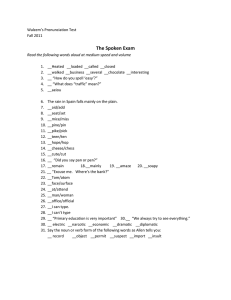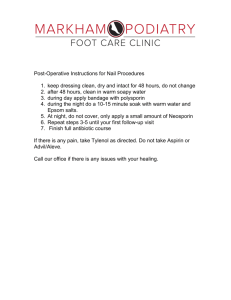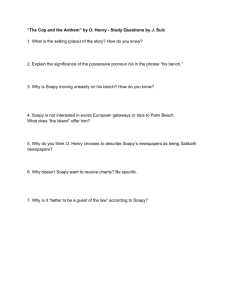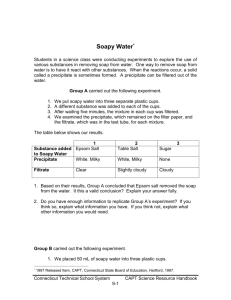090316 Soapy Water One Page
advertisement
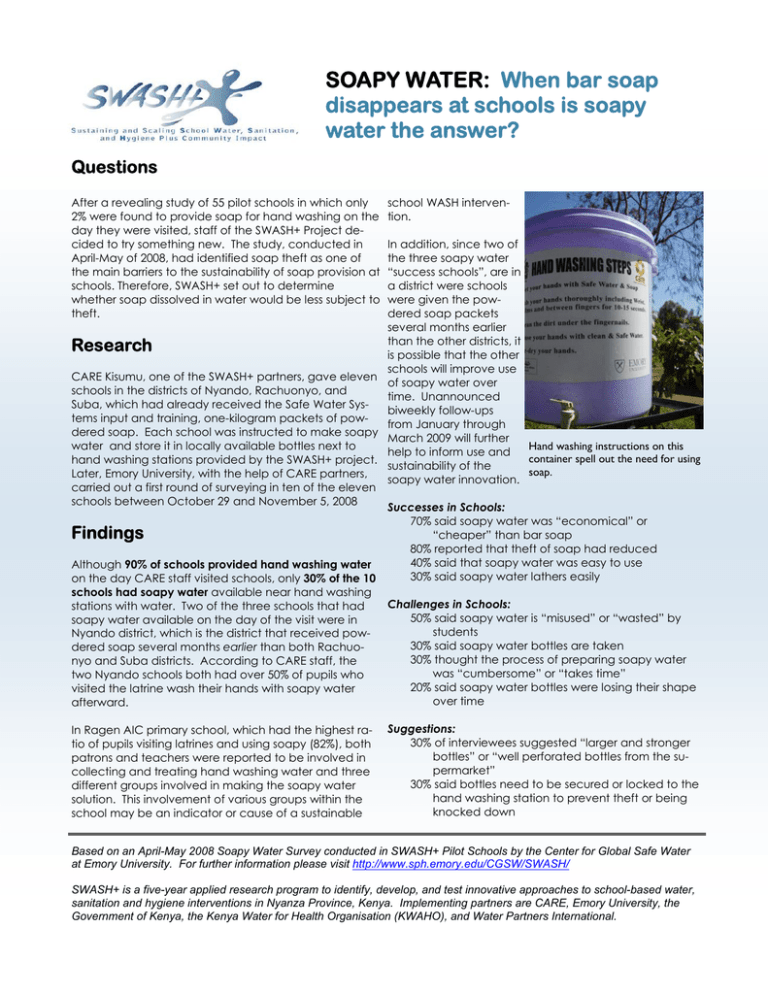
SOAPY WATER: When bar soap disappears at schools is soapy water the answer? Questions After a revealing study of 55 pilot schools in which only 2% were found to provide soap for hand washing on the day they were visited, staff of the SWASH+ Project decided to try something new. The study, conducted in April-May of 2008, had identified soap theft as one of the main barriers to the sustainability of soap provision at schools. Therefore, SWASH+ set out to determine whether soap dissolved in water would be less subject to theft. school WASH intervention. In Ragen AIC primary school, which had the highest ratio of pupils visiting latrines and using soapy (82%), both patrons and teachers were reported to be involved in collecting and treating hand washing water and three different groups involved in making the soapy water solution. This involvement of various groups within the school may be an indicator or cause of a sustainable Suggestions: 30% of interviewees suggested “larger and stronger bottles” or “well perforated bottles from the supermarket” 30% said bottles need to be secured or locked to the hand washing station to prevent theft or being knocked down In addition, since two of the three soapy water “success schools”, are in a district were schools were given the powdered soap packets several months earlier than the other districts, it Research is possible that the other schools will improve use CARE Kisumu, one of the SWASH+ partners, gave eleven of soapy water over schools in the districts of Nyando, Rachuonyo, and time. Unannounced Suba, which had already received the Safe Water Sysbiweekly follow-ups tems input and training, one-kilogram packets of powfrom January through dered soap. Each school was instructed to make soapy March 2009 will further Hand washing instructions on this water and store it in locally available bottles next to help to inform use and container spell out the need for using hand washing stations provided by the SWASH+ project. sustainability of the soap. Later, Emory University, with the help of CARE partners, soapy water innovation. carried out a first round of surveying in ten of the eleven schools between October 29 and November 5, 2008 Successes in Schools: 70% said soapy water was “economical” or Findings “cheaper” than bar soap 80% reported that theft of soap had reduced 40% said that soapy water was easy to use Although 90% of schools provided hand washing water 30% said soapy water lathers easily on the day CARE staff visited schools, only 30% of the 10 schools had soapy water available near hand washing Challenges in Schools: stations with water. Two of the three schools that had 50% said soapy water is “misused” or “wasted” by soapy water available on the day of the visit were in students Nyando district, which is the district that received pow30% said soapy water bottles are taken dered soap several months earlier than both Rachuo30% thought the process of preparing soapy water nyo and Suba districts. According to CARE staff, the was “cumbersome” or “takes time” two Nyando schools both had over 50% of pupils who 20% said soapy water bottles were losing their shape visited the latrine wash their hands with soapy water over time afterward. Based on an April-May 2008 Soapy Water Survey conducted in SWASH+ Pilot Schools by the Center for Global Safe Water at Emory University. For further information please visit http://www.sph.emory.edu/CGSW/SWASH/ SWASH+ is a five-year applied research program to identify, develop, and test innovative approaches to school-based water, sanitation and hygiene interventions in Nyanza Province, Kenya. Implementing partners are CARE, Emory University, the Government of Kenya, the Kenya Water for Health Organisation (KWAHO), and Water Partners International.
